ITALERI
[ Page 2 ]
F-35A joint strike fighter in 1/32 scale: kit review & modelling report of the ITALERI kit
page 2
page 3
page 4
page 5
The accuracy of the kit is a bit difficult to establish as I was unable to find good drawings of the F-35A. The approach taken here was looking at photos. Various photos were retrieved from particularly the official Lockheed Martin website and Lockheed Martin PR documentation. It is not always clear what the exact status is of a shown aircraft as many are test aircraft but I tried to seek the most recent photos. And very welcome was the KLu F-35A WALKAROUND pages of my modelling friend Cees Hendriks at IPMS.NL ...
I taped the main parts of the kit together with masking tape.
DIMENSIONS
The wing span of the kit was compared with the real F-35A, being 10,7 meter or 35 feet. The kit wing span was within 2 mm in 1/32 scale.
The overall length (without any pitot which is not fitted on production F-35 aircraft) was 15,7 meter or 50,5 feet . The kit length was again within 2 mm in 1/32. The rest of dimensions could not be verified but the kit seems pretty accurate and promising.
SHAPES
Next I looked at various curves and shapes using various real F-35 photos and photographing the model in the same position/ attitude as much as possible.
OK, let us see...
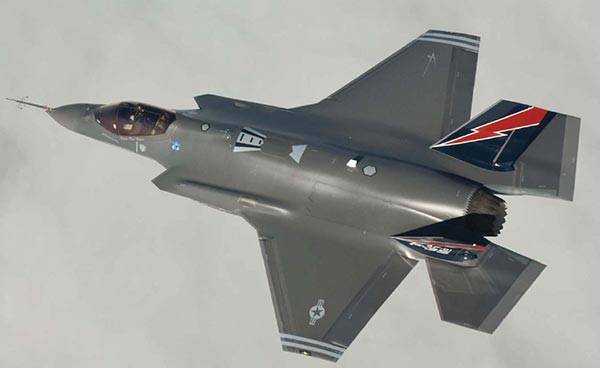
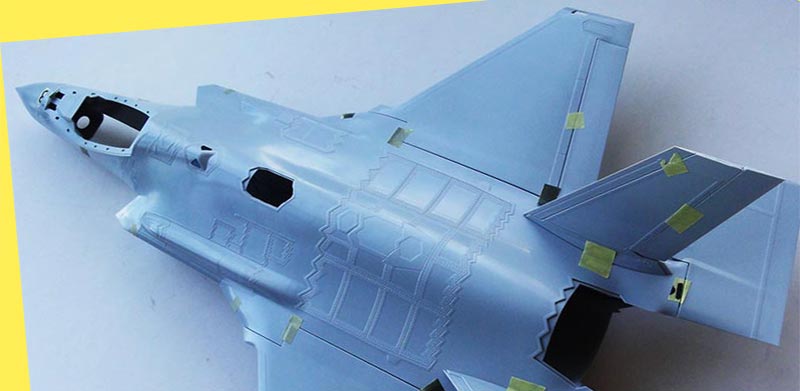
(1) The upper area overall of the fuselage seems to have the right proportions.
(1a) the bulged fairing (with the Gatling GAU-22 four barrell canon with a closed firing door) on top of the left intake seems a bit "too sharp".
(1b) the raised zig-zag panels are a bit too pronounced on the model.
-


(2) The side view looks OK too.
The intake angle is OK and also the angles of the vertical tails. The nose curvature is convincing.
The wing tip curve at the wing tips at first sight seems a little bit less than on the real F-35A but that is may be a little bit suggested as the real aircraft has its leading edge slat extended and drooped. The real photo with the real slat set in normal "up" position below seems to show that the kit shape at the wing tip is not bad at all. A little bending of the wingtip kit part will do the job!
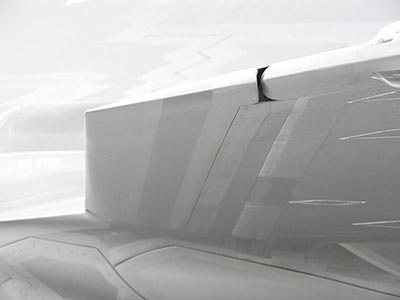
(F-35A slat section and wing tip; photo courtesy of my modelling friend Cees Hendriks)

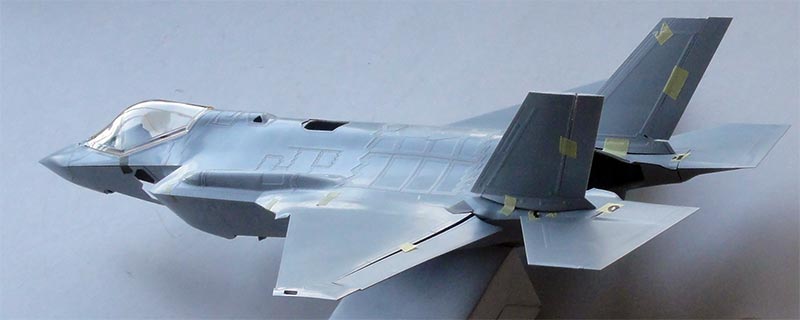
(3) This convincing shot shows that the main angles and proporsions are OK. The canopy shape looks to be accurate. The nose with some edges looks good as well.
(3a) The bulged canon fairing on top of the left intake seems on the model a little "too pronounced" as also thought in (1a).
-
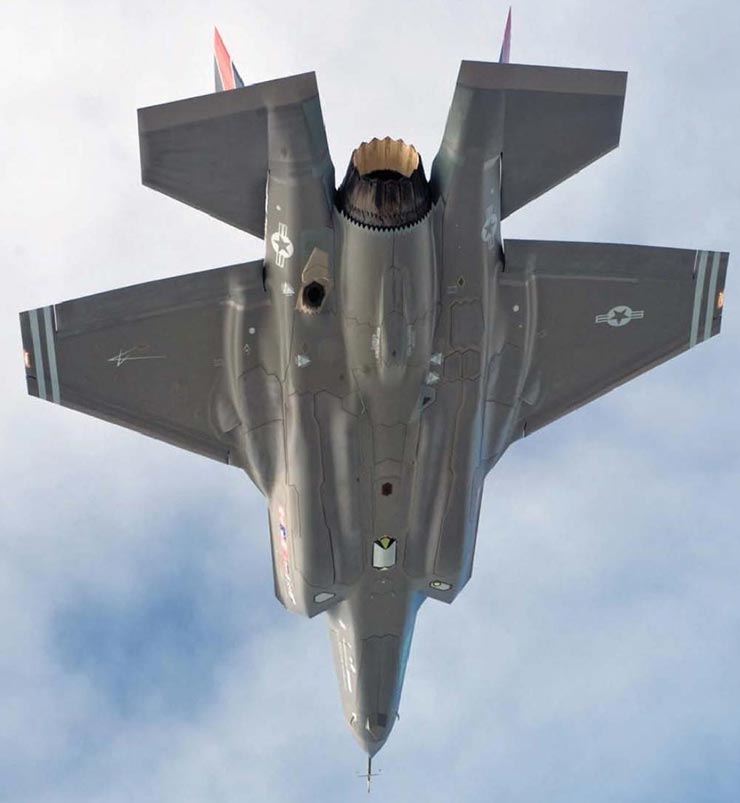
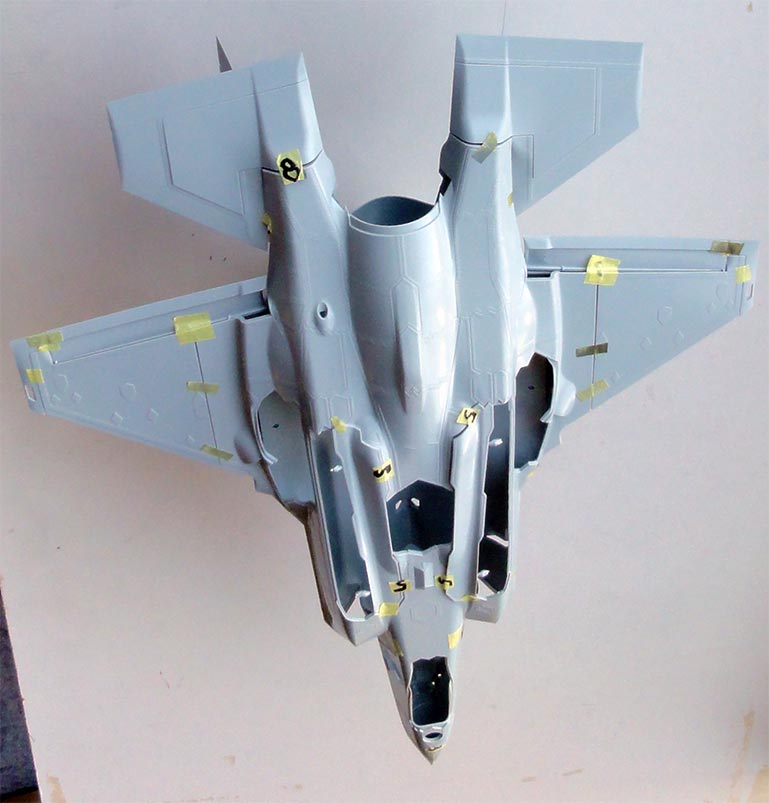
(4) The lower view shows that the main angles seem to be in order.
Important to note first that the all important intakes and angles seem to be correct as well as the stabilizer proportions.
The inside and outside curves look OK as well as the area in the mid lower fuselage.
(4a) The central bulge (with inside the arrestor hook) at the rear engine section of the kit seems to be a little "too pronounced".
(4b) The outher fairings for the wheel bays look a bit to sharp angled. This is seen best at the left flap-fairing junction but on the right it seems that this is only a small difference.
(4c) The IPP (advanced APU system) exhaust seems to be a little too small and should be a little more a bigger but smooth bulge. But this can be improved with some putty and sanding.
-
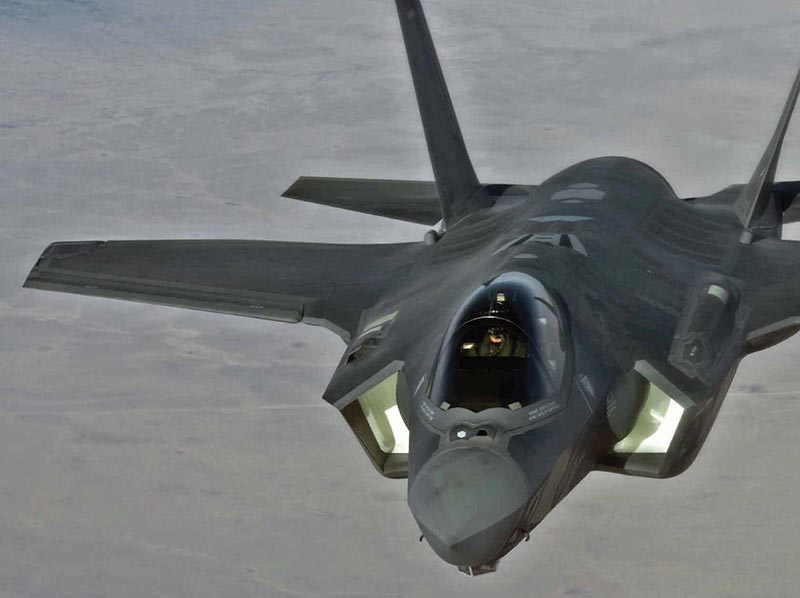

(5) Here again the intakes seems to be of correct proportions.
The canopy shape also looks good as well as the edge of the small nose and the area in front of the canopy.
The wing roots look accurate as well as the area between wing and fuselage.
The curvature of the upper fuselage looks good as well. (though as noted the raised zig-zag panels are a bit too "fat" and raised).
The vertical tails seems to be correctly angled and have good base fairings.
The upper right open bulge on the right intake is quite sharp angled but looks accurate as compared to the real shape.
(5a) the bulged fairing however on top of the left intake seems a bit to sharp as thought as well above at (1a) and (3a). It seems a bit sanding off the sharp bulge may result in a more convincing shape.
-
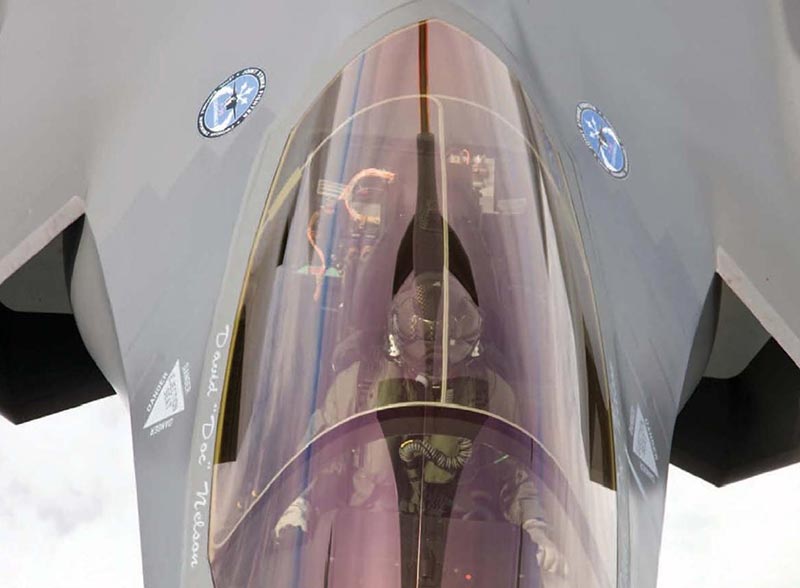
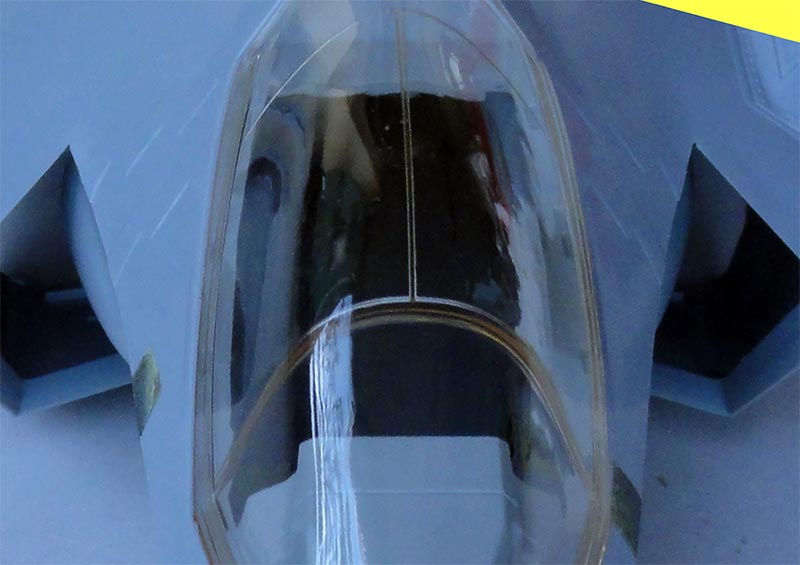
(6) A detailed look at the canopy and intakes seems again to confirm that the kit shapes are accurate. The slight curvature towards the intake is also very well captured. The shape inside of the main instrument coaming is even seen and looks fine. What is seen here as well is that the white area insides the intakes of the real F-35 starts a little more to the rear than the kit part edge but that is simply a matter of masking the white paint areas.
(7) Thickness and the edges of the zig-zag RAM panels.
This was considered looking at detail photos. It seems that the raised zig-zag panel edges on the kit are a bit too thick / too pronounced. With some sanding, the panels on the Italeri kit can be improved through smooth sanding almost completely flat to have an almost flush result. This is than followed with "polishing" work to remove any scratches.
(8) Shapes of various details
(8a) The two main wheels look of 27 mm diameter good of the kit but the tyres have a too flattened "weighted" appearance.
(8b) The single nose wheel in the kit however is also far too much "weighted" and flattened.
I will correct the tyres.
MORE findings on the details will be covered while modelling the kit.
MY FIRST CONCLUSION:
The Italeri kit looks to be very good in proportions and shapes!
What can be improved with a bit with putty, sanding and smoothing are some of the fairings: See points (4a), (4b), (4c), (5a).
The zig-zag raised panels can be sanded a bit thinner in most areas, with some work it can be done.
OVERALL.... I have the impression that Italeri got some info from Lockheed Martin in designing this kit: the main dimensions are OK and most of the outside shapes of the kit look OK.
On to next [ Page 3... ]
Back to 1/32 Models
(c) Copyright "designer"/ All rights reserved. Your comments are welcomed by webmaster
Created this page
March 28, 2017